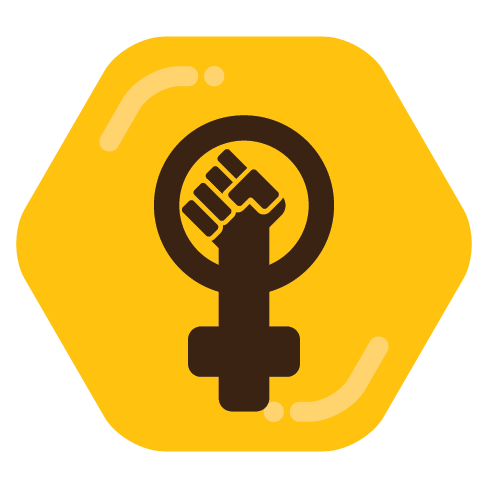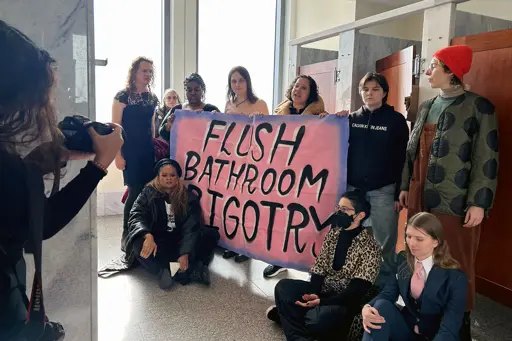Happy to have a conversation if you feel something was inappropriately removed. Our current workflow is to run questionable comments by a group with all moderators and admins before taking action. Nobody is perfect however, and we do occasionally make mistakes.
Gaywallet (they/it)
I’m gay
- 363 Posts
- 1.58K Comments

 12·21 days ago
12·21 days agoI’m glad to see a lot of different people trying different models. I don’t think microblogging really has the capability of being nontoxic, but who knows? Maybe they’ll succeed where everyone else has failed. I certainly know we’re trying to have nontoxic social media around here, and we have plenty of issues at a much smaller scale.
I understand why you might be upset based on how they made a rather sweeping statement about the comments without addressing any content. When they said “a bunch of sanctimonious people with too much appreciation for their own thoughts and a lack of any semblance of basic behaviour” it might strike many as an attack on the user base, but I’m choosing to interpret it through the lens of simply being upset at people who are not nice. I could be wrong, and perhaps @[email protected] can elaborate on exactly who and what they were talking about.
Regardless, let’s try our best to treat them in good faith. Don’t let your own biases shape how you interpret people or their language. Please try to ask clarifying questions first before jumping to the assumption that they are a right wing troll.

 6·22 days ago
6·22 days agoHey fam, starting with this reply its pretty clear you’re not engaging in good faith - this statement is fundamentally accusatory. It’s unsurprising that other folks viewed this as an attack. Please chill out, treat users with good faith, and do your best to avoid escalating things - you should gut check your own comments and ask yourself “how will others view this? Is this helpful?” and if the answer is no, rewrite your comment or don’t reply.

 3·28 days ago
3·28 days agoThat’s really not how NIH grants work

 4·28 days ago
4·28 days agoI remember seeing a study once which showed regret about gender transition at about 6%.
Meta-analyses almost always put the figure at closer to 1%. It is one of the least regretted things that humans do. To provide a comparison figure, education regret tends to hover closer to 40% and parenting at 10%.

 3·28 days ago
3·28 days agoIt has already extensively been studied and it has always shown that it has the least amount of regret of any surgeries, and that transgender people regret transitioning at rates often literal magnitudes lower than just about anything else people regret in their lives - children, tattoos, marriage, education, romance, leisure.

 9·29 days ago
9·29 days agoFor more on how marginalized people are under-diagnosed with autism and why, I highly recommend picking up the book “Unmasking Autism” by Devon Price.

 3·1 month ago
3·1 month agoyea fair enough

 10·1 month ago
10·1 month agoI mean, yeah? Are things so bad this isn’t obvious?

 5·1 month ago
5·1 month agoThat’s just cherrypicking. Yes some people will review bomb. Others will make fake positive reviews to counteract people review bombing a game for being too “woke”.
In the end the only thing that even could matter is how people in aggregate work - and that’s easy to account for, you just readjust the distribution to be more spread out to get the “true” score of things.
This video seems more like clickbait than anything. I’m finding it hard to find anything worthwhile to engage with here even from a high level.

 5·1 month ago
5·1 month agoThat’s not even worth addressing or bringing up, because they don’t understand science. It’s better to just call them racist, for being racist, because that’s what is happening here… racism

 12·1 month ago
12·1 month agoFrom another article on the same issue:
Buried within the list of issues is a reference to a display at the Smithsonian American Art Museum. The display, the executive order complains, “claims that ‘sculpture has been a powerful tool in promoting scientific racism’ and promotes the view that race is not a biological reality but a social construct.”
I’m brought to mind of the concept that any movement must have a peaceful branch for the system to acknowledge and meet demands for change as well as a “violent” branch to drive the opponents to the bargaining table. And within both of those is a need to take care of the community to enable them to continue to protest for change.
Completely agreed with this concept. I’ve been a big fan of multiple voices advocating for different things. It helps others understand where the center is or where the most agreement is likely to be. You need some people asking for everything in order to push in the direction of change, otherwise the people in charge will think what they have given up is satisfactory (or perhaps even too much).
I think where these protests will succeed or fail is community coming together to take care of each other, with a safety net so many more people will be able to participate and make their voices heard.
Yes I think general principles of anarchy apply here in that the more people you can get mobilized around a single issue and the more engagement you can get the more successful it will be. Entirely peaceful protests can drive huge change, but only when the government is a peaceful one who actively wishes to represent the people. The more corrupt and out of touch they get the less they will care about the constituency and the massive prevalence of voter disenfranchisement and a system of corruption which is increasingly run on money in the United States seems to suggest that it falls more closely in that latter bucket.
Yeah, I’ll have to check the book out to understand more.
Looking at hundreds of campaigns over the last century, Chenoweth found that nonviolent campaigns are twice as likely to achieve their goals as violent campaigns. And although the exact dynamics will depend on many factors, she has shown it takes around 3.5% of the population actively participating in the protests to ensure serious political change.
I really wish this was in a proper paper, as I wonder how much selection bias is at play here. How is “achieving their goals” measured? What kind of governments are we talking about? What is “serious political change”? I have a lot of serious doubt that nonviolent protests do much against hostile governments. They are absolutely important, and true research has revealed they are much more effective at mobilizing people who agree with the protestors, but the research also shows that violent protests have a larger affect on folks who do not agree with the protestors because they cause actual harm and more forcibly bring people to the table to negotiate. But what exactly is considered violent is a difficult one to quantify and direct physical violence (injuring and killing others) is much less effective than non-human directed violence which is difficult to quantify and to define. Destruction of property, for example, is often considered a form of non-human directed violence which likely has a larger affect on change than human-directed physical violence because no one is directly injured and it creates a direct economic incentive for change to happen.

 10·1 month ago
10·1 month agoHHS direct link is down now, unsure if moved or removed
Trying new potential solutions is definitely a step in the right direction! I hope it helps more than you expected or even dreamed it could. 💜
Moderates

































wokepedia lmao what’s wrong with the world